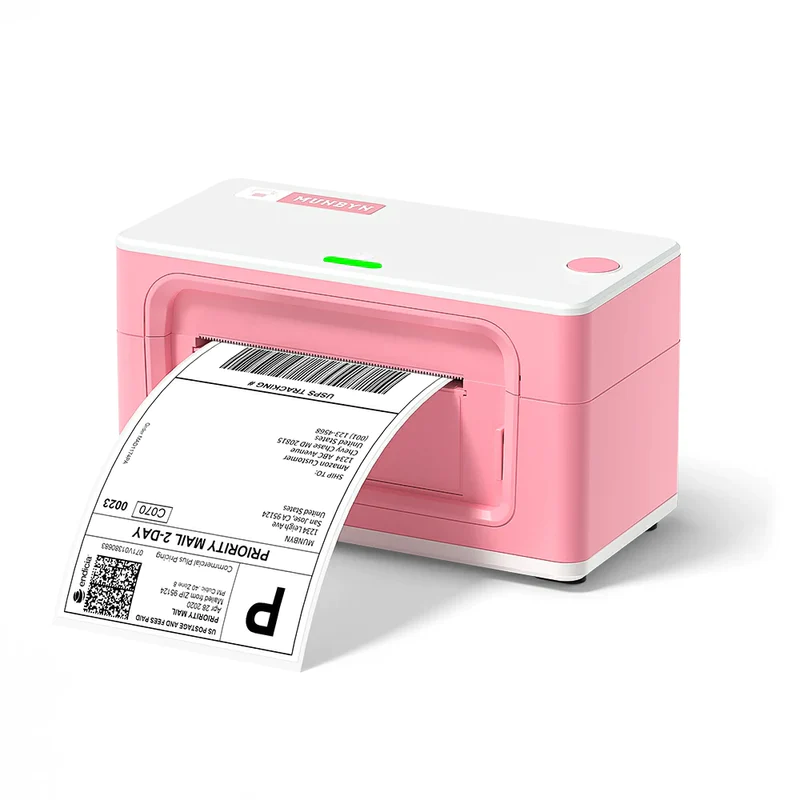
The Evolution and Benefits of Shipping Label Printers
In the intricate world of modern logistics, efficiency and accuracy are paramount. Whether you’re a small e-commerce business or a large-scale distributor, the seamless movement of goods relies heavily on effective labeling and tracking. Enter the shipping label printer – a technological marvel that has revolutionized the way businesses manage their shipping operations. In this article, we’ll delve into the evolution, functionalities, and benefits of shipping label printers, exploring how they have transformed the logistics landscape and paved the way for smoother, more organized, and error-free shipping processes.
- From Handwriting to High Precision: The Evolution of Shipping Labels
In the not-so-distant past, preparing shipping labels was a laborious process that involved handwriting or manually typewriting each label. The potential for errors was high, and as the volume of shipments increased, the need for a more streamlined solution became evident. This paved the way for the advent of shipping label printers, marking a significant shift in the logistics industry.
The early iterations of shipping label printers were basic, but they laid the foundation for the advanced devices we have today. These printers allowed businesses to print labels with accurate shipping information, barcodes, and tracking codes, reducing human error and improving overall efficiency.
- A Multifunctional Tool: Features and Capabilities
Modern shipping label printers have evolved into multifunctional tools that go beyond simple label printing. They come equipped with a range of features and capabilities designed to enhance the entire shipping process. Some of the key functionalities include:
- Barcode Generation: Shipping label printers are capable of generating barcodes that encode essential information about the shipment. Barcodes play a pivotal role in tracking packages throughout their journey, from the warehouse to the recipient’s doorstep.
- Integration with Shipping Platforms: Many shipping label printers can be seamlessly integrated with e-commerce and shipping platforms. This integration allows businesses to retrieve shipping information, addresses, and order details directly from their systems, reducing manual data entry and the risk of errors.
- Customization Options: Shipping label printers offer a range of customization options, enabling businesses to include their logos, branding elements, and return instructions on the labels. This not only adds a professional touch but also enhances the customer experience.
- Multi-Carrier Compatibility: Businesses often work with multiple carriers to cater to different shipping needs. Modern label printers are compatible with various carrier requirements, ensuring that labels are formatted correctly and adhere to carrier guidelines.
- High-Quality Printing: Shipping label printers offer high-quality printing capabilities, ensuring that labels are legible and scannable. Clear and accurate labels contribute to faster processing and fewer instances of misrouting.
- Streamlining Operations: The Benefits of Shipping Label Printers
The adoption of shipping label printers brings a multitude of benefits to businesses of all sizes. These benefits go beyond mere efficiency and extend to customer satisfaction, cost reduction, and improved accuracy.
- Enhanced Efficiency: Shipping label printers drastically reduce the time it takes to generate shipping labels. With automation and integration features, businesses can streamline their labeling process and focus on other critical tasks.
- Reduced Errors: Manual data entry and handwriting are prone to errors, which can lead to misrouted shipments and delays. Shipping label printers minimize human errors by generating accurate labels with the correct information.
- Accurate Tracking: Barcodes generated by shipping label printers enable accurate tracking of packages at every stage of the shipping journey. This enhances transparency for both businesses and customers, providing real-time insights into the package’s location.
- Cost Savings: By minimizing errors and streamlining operations, businesses can save on costs associated with misrouted shipments, customer complaints, and manual labor. Additionally, shipping label printers help optimize shipping rates by generating accurate carrier labels.
- Improved Customer Experience: Accurate, scannable labels and timely shipments contribute to an improved customer experience. Customers receive their orders on time and can easily track their packages, leading to increased satisfaction and loyalty.
- E-commerce Revolution: Tailoring to Online Retailers
The rise of e-commerce has transformed the way goods are bought and sold, placing a significant emphasis on efficient shipping processes. Shipping label printers have become a crucial tool for e-commerce businesses, as they enable these retailers to manage high volumes of shipments seamlessly.
- Batch Printing: E-commerce businesses often need to process a large number of orders simultaneously. Shipping label printers offer batch printing capabilities, allowing businesses to print multiple labels at once, thereby saving time and effort.
- Integration with Marketplaces: Many e-commerce businesses operate on various online marketplaces. Shipping label printers can integrate with these platforms, extracting order information and automating label creation.
- Returns Management: E-commerce retailers deal with returns as part of their operations. Shipping label printers facilitate returns management by generating return labels with ease, contributing to a smooth and hassle-free process for both customers and businesses.
- Scalability: As e-commerce businesses grow, so does their shipping volume. Shipping label printers can scale to accommodate increased demand, ensuring that the labeling process remains efficient even as the business expands.
- Choosing the Right Printer: Factors to Consider
Selecting the right shipping label printer is crucial to optimizing your shipping operations. When considering a shipping label printer, keep these factors in mind:
- Volume: Assess your shipping volume to determine the capacity you require. Some printers are better suited for small businesses, while others are designed to handle high-volume shipments.
- Compatibility: Ensure that the printer is compatible with your shipping platform and carriers. Integration capabilities play a significant role in streamlining operations.
- Connectivity: Consider whether you prefer a wired or wireless printer. Wireless printers offer greater flexibility and mobility within your workspace.
- Print Quality: High-quality printing is essential to ensure that labels are clear and scannable. Look for printers with high-resolution printing capabilities.
- Ease of Use: A user-friendly interface and intuitive software contribute to a smoother experience. Look for printers that are easy to set up, use, and maintain.
- Support and Maintenance: Consider the availability of customer support and maintenance services. Reliable support ensures that you can quickly address any issues that may arise.
Conclusion
The evolution of shipping label printers has reshaped the logistics landscape, offering businesses an efficient, accurate, and streamlined solution for managing their shipping operations. From handwritten labels to high-precision barcode generation, these printers have revolutionized the way packages are labeled, tracked, and delivered.
Whether you’re an e-commerce retailer seeking to manage high shipping volumes or a distributor aiming for seamless logistics, shipping label printers are a powerful tool that enhances efficiency, reduces errors, and contributes to an improved customer experience. As technology continues to advance, shipping label printers will undoubtedly play an integral role in shaping the future of logistics, offering businesses the means to navigate the complex world of shipping with ease and precision.




